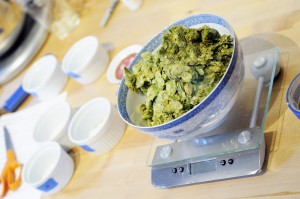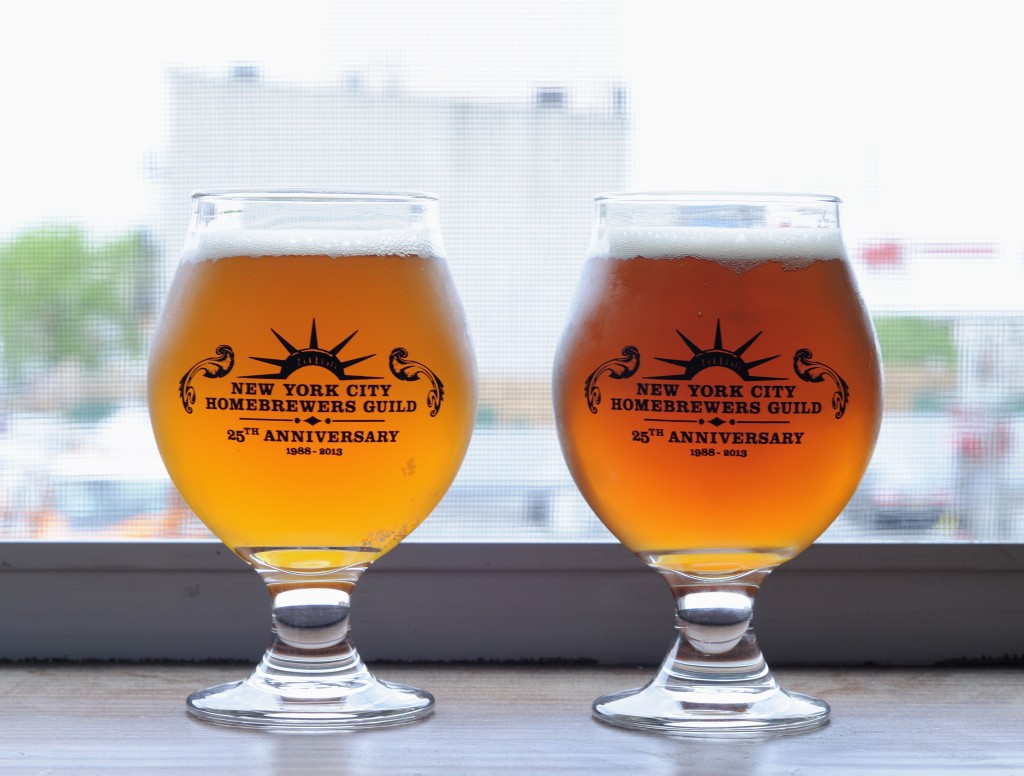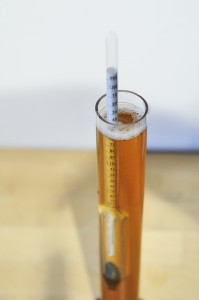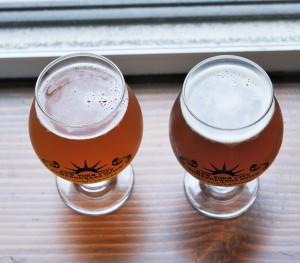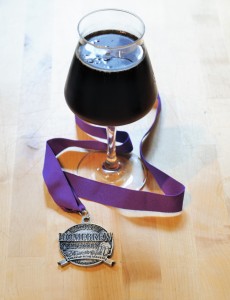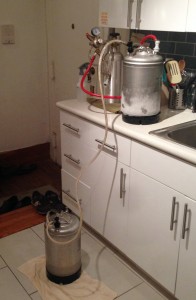SMaSH (Single Malt and Single Hop) beers are a great way to gain an understanding of the specific qualities possessed by distinct malts and hops. Admittedly, I haven’t brewed a whole lot of SMaSH beers, but it is something I hope to do more of in the future; especially as I try to further my sensory knowledge of various ingredients and processes. This iteration featured Citra hops and Vienna malt in an IPA format. The focus of this beer was creating massive hop flavor and aroma without the use of dry hops. The beer uses a number of atypical hopping techniques including mash hops, a large whirlpool addition, and hop backing.
Citra Hop / Vienna Malt SMaSH Recipe:
Specifications:
Original Gravity: 1.070 (measured)
Terminal Gravity: 1.020 (measured)
Color: 9.86 SRM
Alcohol: 6.6 ABV (calculated)
Bitterness: 13.2 IBU (does not account for significant whirlpool hop additions)
Grist:
12.5 lb (100.0%) Vienna Malt (Weyermann)
Mash Regiment:
152 °F – Sacc Rest – 60 min
Water Treatment:
Extremely Soft NYC Water
6g Gypsum (to mash)
3g Calcium Chloride (to mash)
Hopping:
4 oz Citra™ (12.7% AA) – Mash Hopping
0.25 oz Citra™ (12.7% AA) – 60 m
6.0 oz Citra™ (12.7% AA) – Whirlpool 20m
3 oz Citra™ (12.7% AA) – Hopback (Blichmann Hop Rocket)
Kettle Additions:
0.5 ea Whirlfloc Tablets (Irish moss) – 15 m
0.5 tsp Wyeast Nutrient – 10 m
Yeast:
Fermentis Safale US-05 – (1) re-hydrated pack. Ferment at 66 °F.
Citra / Vienna SMaSH Tasting Notes:
Judged as a BJCP Category 14b. American IPA.
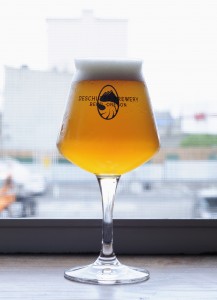 Aroma (10/12):
Aroma (10/12):
Dominate high hop aroma reminiscent of lychee, mango, pineapple, and guava. A veritable explosion of tropical fruits burst from the glass. The malt character is low and hidden behind the hops. The little malt that expresses itself is lightly toasty with perhaps a hint of sweet toffee.
Appearance (2/3):
Deep gold with a very light hop haze. The head is persistent and consists of tight bubbles that are sticky and cling to the side of the glass.
Flavor (16/20):
Huge hop flavors fill the palate. This is a fruit bomb with flavors reminiscent of tropical punch – mango, pineapple, guava, passion fruit, and tangerine. The hops have none of the pithy bitterness common in grapefruity American varietals like Cascade, Centennial, or Amarillo. Bitterness is medium-low and leaves the beer with a slightly sweet finish. The malt is soft and round with a hint of toasted cereal. There is a low minerally finish — perhaps too much so. The shear amount of fruity hops furthers the impression of sweetness.
Mouthfeel (4/5):
Medium bodied with moderate carbonation. The beer has none of the astringency or harshness that is often present in dry hopped IPAs.
Overall Impression (8/10):
This is an extremely interesting and educational beer. Firstly, the beer is profoundly bright and does not feature any of the grassy harshness / flavors of plant material that are often present in dryhopped beers. I find this very enjoyable, although it could be a bit disappointing to those that expect a bit of hop ‘bite’ in American IPAs. Additionally, I am extremely surprised by the low malt character. My initial understanding of Vienna Malt was that it was much closer to a melanoidin heavy Munich malt. In this beer, it presents much more like a slightly more toasty Maris Otter or other slightly darker base malt.
Excellent (40/50)

